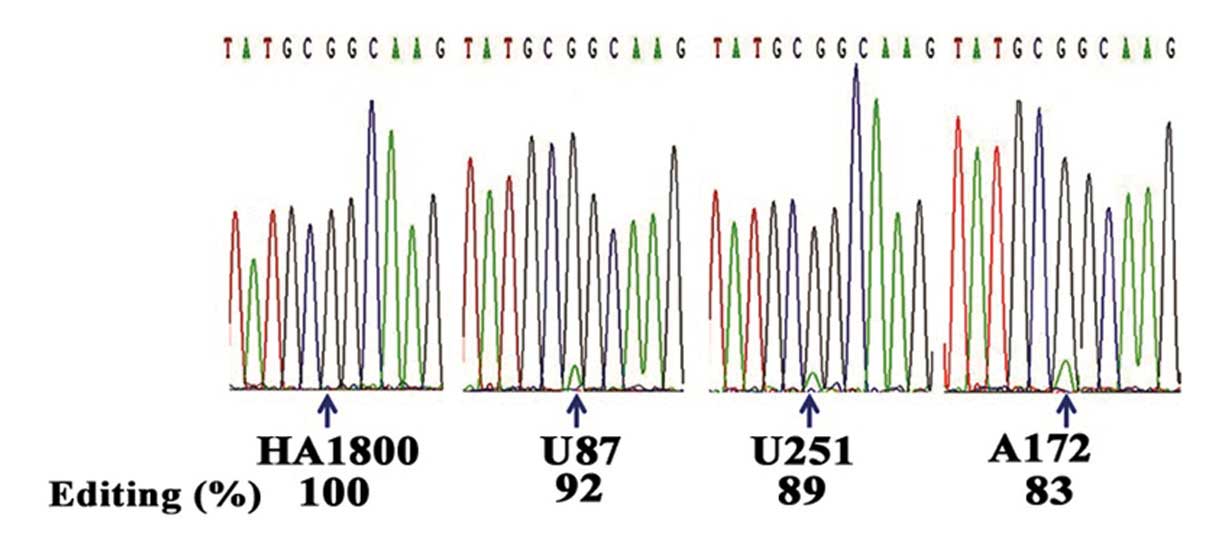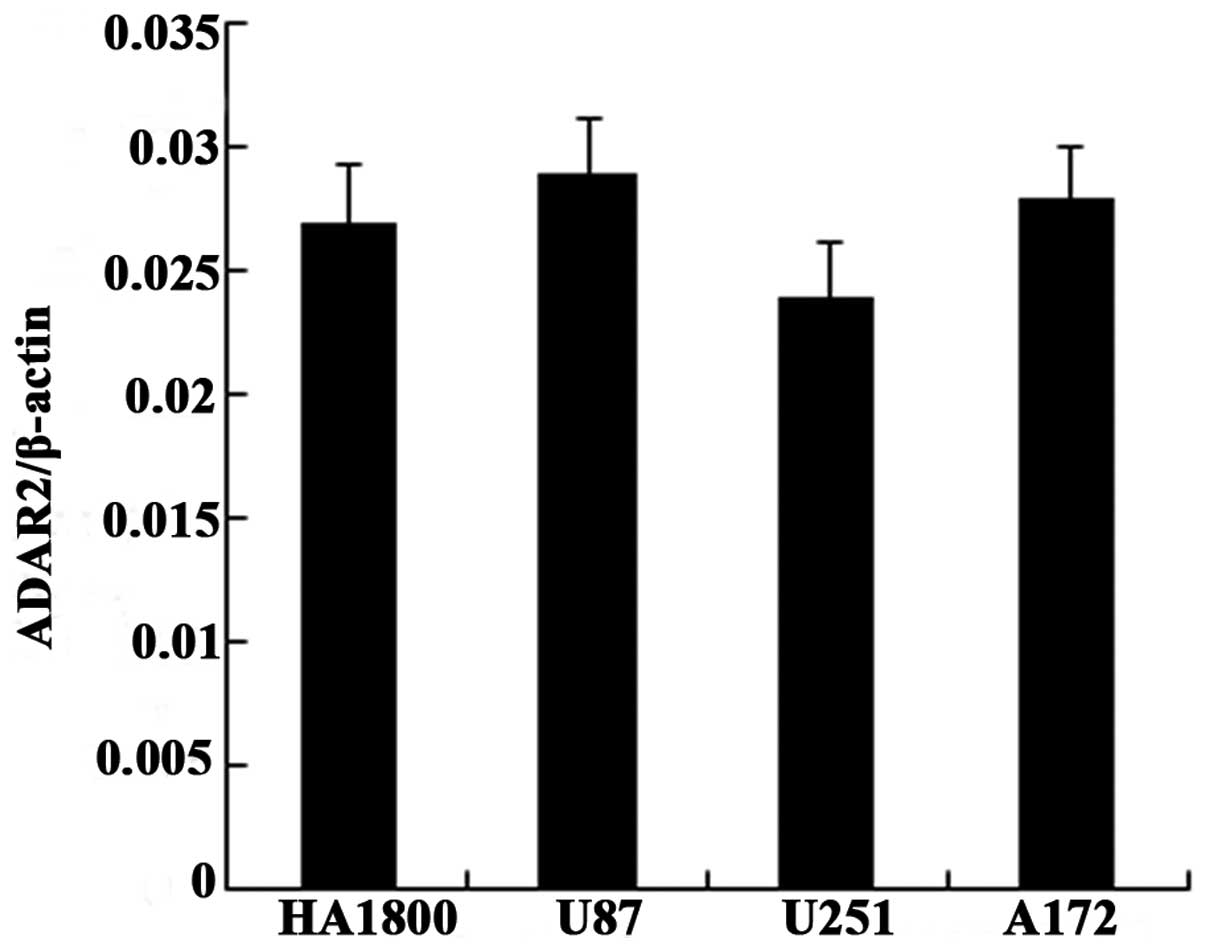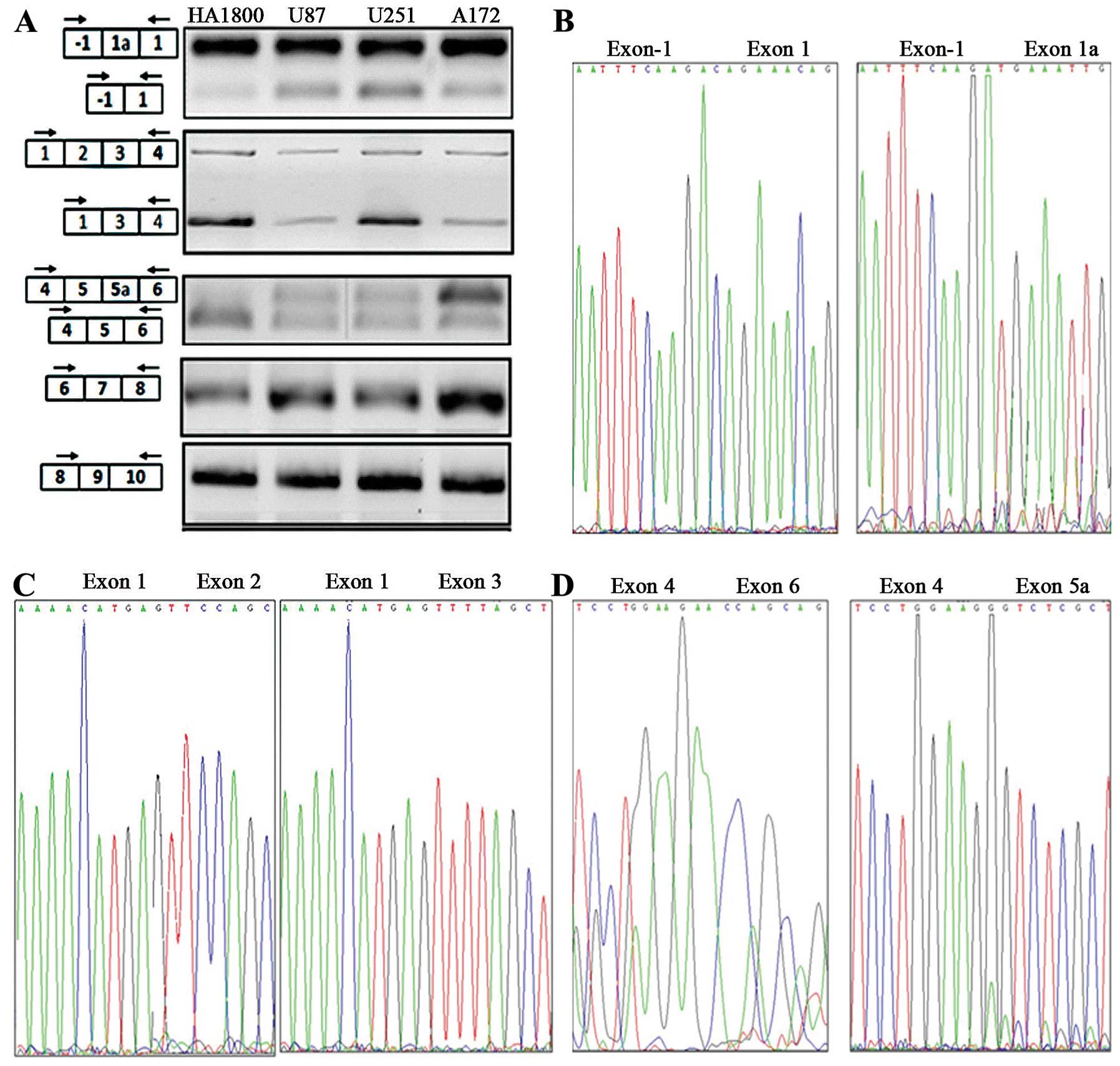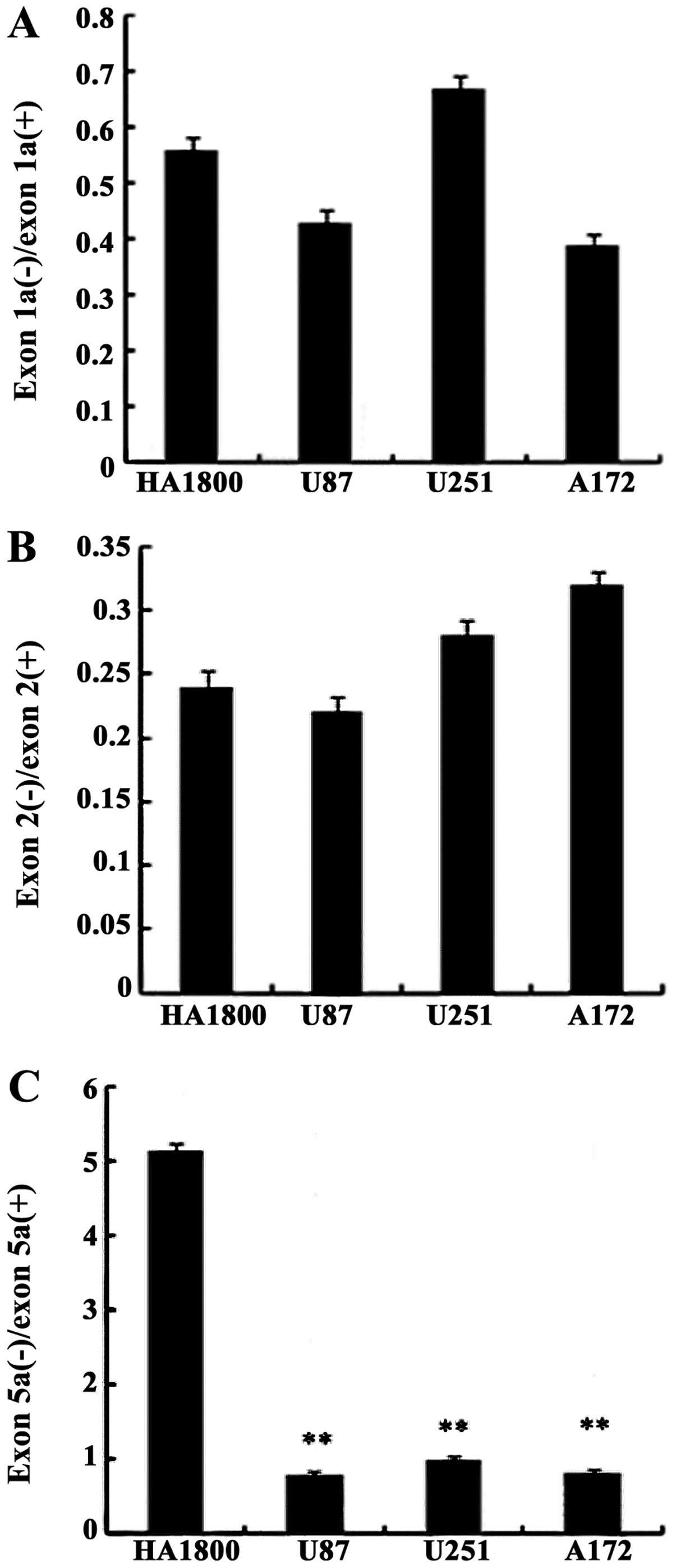|
1
|
Tang W, Fei Y and Page M: Biological
significance of RNA editing in cells. Mol Biotechnol. 52:91–100.
2012. View Article : Google Scholar : PubMed/NCBI
|
|
2
|
Jacobs MM, Fogg RL, Emeson RB and Stanwood
GD: ADAR1 and ADAR2 expression and editing activity during
forebrain development. Dev Neurosci. 31:223–237. 2009. View Article : Google Scholar : PubMed/NCBI
|
|
3
|
Goodman RA, Macbeth MR and Beal PA: ADAR
proteins: structure and catalytic mechanism. Curr Top Microbiol
Immunol. 353:1–33. 2012.
|
|
4
|
George CX, Gan Z, Liu Y and Samuel CE:
Adenosine deaminases acting on RNA, RNA editing, and interferon
action. J Interferon Cytokine Res. 31:99–117. 2011. View Article : Google Scholar :
|
|
5
|
Kubota-Sakashita M, Iwamoto K, Bundo M and
Kato T: A role of ADAR2 and RNA editing of glutamate receptors in
mood disorders and schizophrenia. Mol Brain. 7:52014. View Article : Google Scholar : PubMed/NCBI
|
|
6
|
Slotkin W and Nishikura K:
Adenosine-to-inosine RNA editing and human disease. Genome Med.
5:105–112. 2013. View
Article : Google Scholar : PubMed/NCBI
|
|
7
|
Avesson L and Barry G: The emerging role
of RNA and DNA editing in cancer. Biochim Biophys Acta.
1845:308–316. 2014.PubMed/NCBI
|
|
8
|
Galeano F, Tomaselli S, Locatelli F and
Gallo A: A-to-I RNA editing: The ‘ADAR’ side of human cancer. Semin
Cell Dev Biol. 23:244–250. 2012. View Article : Google Scholar
|
|
9
|
Dominissini D, Moshitch-Moshkovitz S,
Amariglio N and Rechavi G: Adenosine-to-inosine RNA editing meets
cancer. Carcinogenesis. 32:1569–1577. 2011. View Article : Google Scholar : PubMed/NCBI
|
|
10
|
Maas S, Patt S, Schrey M and Rich A:
Underediting of glutamate receptor GluR-B mRNA in malignant
gliomas. Proc Natl Acad Sci USA. 98:14687–14692. 2001. View Article : Google Scholar : PubMed/NCBI
|
|
11
|
Paz N, Levanon EY, Amariglio N, Heimberger
AB, Ram Z, Constantini S, Barbash ZS, Adamsky K, Safran M,
Hirschberg A, et al: Altered adenosine-to-inosine RNA editing in
human cancer. Genome Res. 17:1586–1595. 2007. View Article : Google Scholar : PubMed/NCBI
|
|
12
|
Cenci C, Barzotti R, Galeano F, Corbelli
S, Rota R, Massimi L, Di Rocco C, O’Connell MA and Gallo A:
Down-regulation of RNA editing in pediatric astrocytomas: ADAR2
editing activity inhibits cell migration and proliferation. J Biol
Chem. 283:7251–7260. 2008. View Article : Google Scholar : PubMed/NCBI
|
|
13
|
Tomaselli S, Galeano F, Massimi L, Di
Rocco C, Lauriola L, Mastronuzzi A, Locatelli F and Gallo A: ADAR2
editing activity in newly diagnosed versus relapsed pediatric
high-grade astrocytomas. BMC Cancer. 13:255–260. 2013. View Article : Google Scholar : PubMed/NCBI
|
|
14
|
Gerber A, O’Connell MA and Keller W: Two
forms of human double-stranded RNA-specific editase 1 (hRED1)
generated by the insertion of an Alu cassette. RNA. 3:453–463.
1997.PubMed/NCBI
|
|
15
|
Lai F, Chen CX, Carter KC and Nishikura K:
Editing of glutamate receptor B subunit ion channel RNAs by four
alternatively spliced DRADA2 double-stranded RNA adenosine
deaminases. Mol Cell Biol. 17:2413–2424. 1997.PubMed/NCBI
|
|
16
|
Rueter SM, Dawson TR and Emeson RB:
Regulation of alternative splicing by RNA editing. Nature.
399:75–80. 1999. View
Article : Google Scholar : PubMed/NCBI
|
|
17
|
Slavov D and Gardiner K: Phylogenetic
comparison of the pre-mRNA adenosine deaminase ADAR2 genes and
transcripts: conservation and diversity in editing site sequence
and alternative splicing patterns. Gene. 299:83–94. 2002.
View Article : Google Scholar : PubMed/NCBI
|
|
18
|
Kawahara Y, Ito K, Ito M, Tsuji S and Kwak
S: Novel splice variants of human ADAR2 mRNA: skipping of the exon
encoding the dsRNA-binding domains, and multiple C-terminal splice
sites. Gene. 363:193–201. 2005. View Article : Google Scholar : PubMed/NCBI
|
|
19
|
Maas S and Gommans WM: Novel exon of
mammalian ADAR2 extends open reading frame. PLoS One. 4:e42252009.
View Article : Google Scholar : PubMed/NCBI
|
|
20
|
Agranat L, Sperling J and Sperling R: A
novel tissue-specific alternatively spliced form of the A-to-I RNA
editing enzyme ADAR2. RNA Biol. 7:253–262. 2010. View Article : Google Scholar : PubMed/NCBI
|
|
21
|
Galeano F, Rossetti C, Tomaselli S,
Cifaldi L, Lezzerini M, Pezzullo M, Boldrini R, Massimi L, Di Rocco
CM, Locatelli F, et al: ADAR2-editing activity inhibits
glioblastoma growth through the modulation of the
CDC14B/Skp2/p21/p27 axis. Oncogene. 32:998–1009. 2013. View Article : Google Scholar :
|
|
22
|
Kim YJ and Kim HS: Alternative splicing
and its impact as a cancer diagnostic marker. Genomics Inform.
10:74–80. 2012. View Article : Google Scholar : PubMed/NCBI
|
|
23
|
Zhang J and Manley JL: Misregulation of
pre-mRNA alternative splicing in cancer. Cancer Discov.
3:1228–1237. 2013. View Article : Google Scholar : PubMed/NCBI
|
|
24
|
Oltean S and Bates DO: Hallmarks of
alternative splicing in cancer. Oncogene. 33:5311–5318. 2014.
View Article : Google Scholar
|
|
25
|
Sette C, Ladomery M and Ghigna C:
Alternative splicing: role in cancer development and progression.
Int J Cell Biol. 2013:4216062013.PubMed/NCBI
|
|
26
|
Bonomi S, Gallo S, Catillo M, Pignataro D,
Biamonti G and Ghigna C: Oncogenic alternative splicing switches:
role in cancer progression and prospects for therapy. Int J Cell
Biol. 2013:9620382013. View Article : Google Scholar : PubMed/NCBI
|
|
27
|
Liu S and Cheng C: Alternative RNA
splicing and cancer. Wiley Interdiscip Rev RNA. 4:547–566. 2013.
View Article : Google Scholar : PubMed/NCBI
|



















